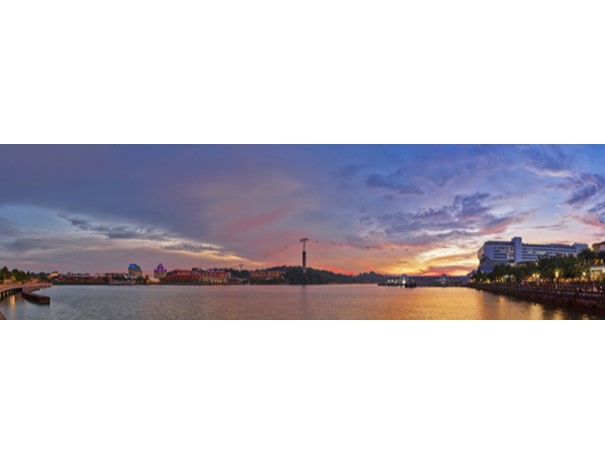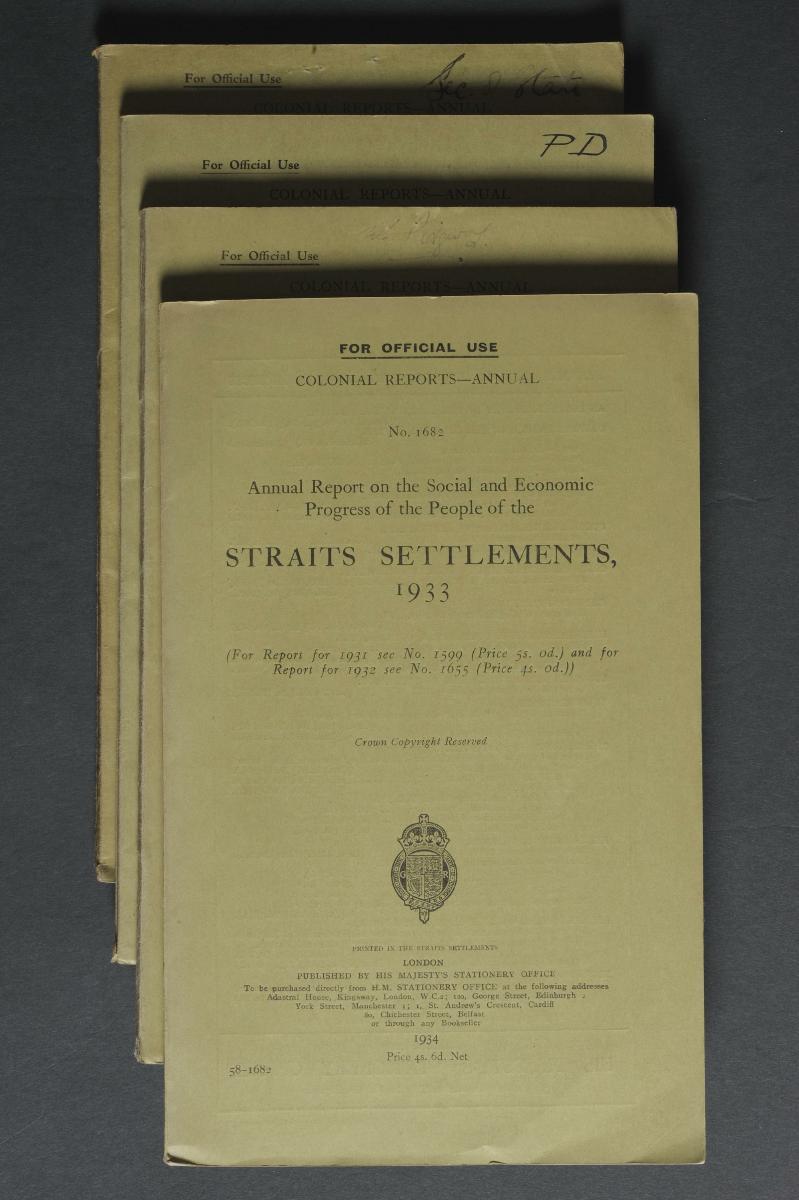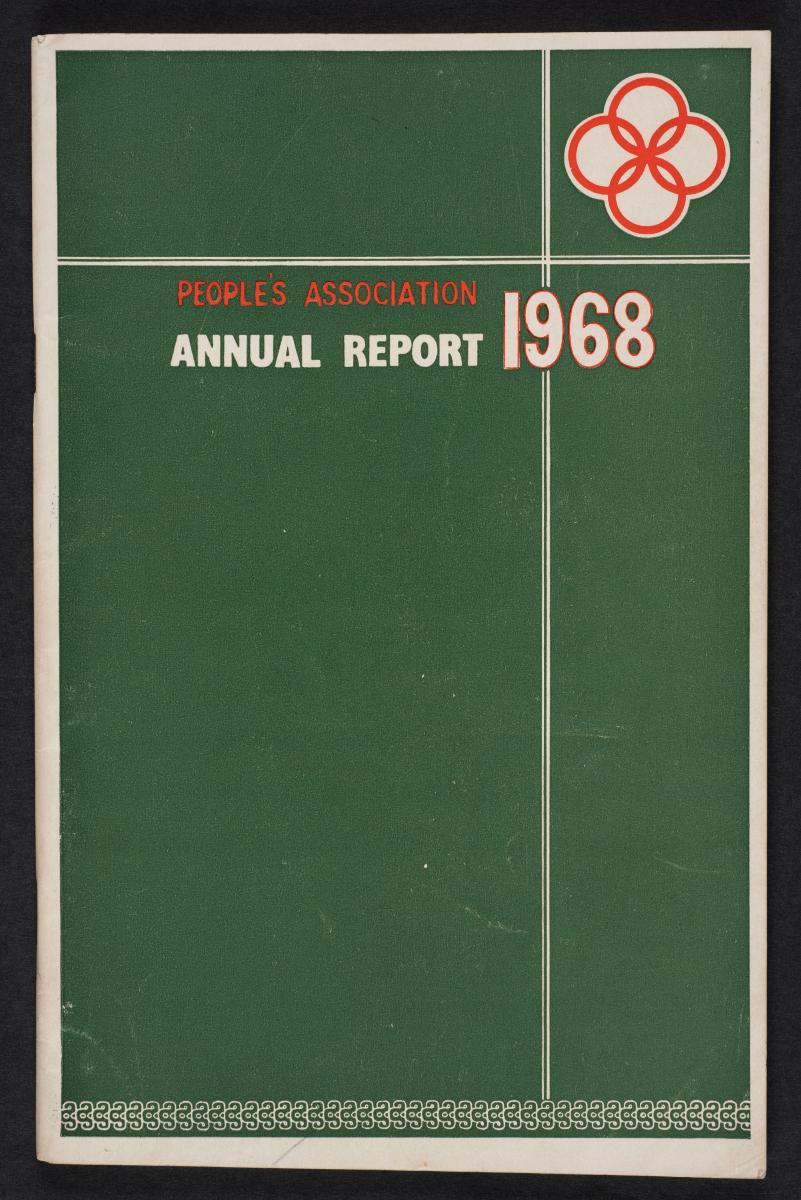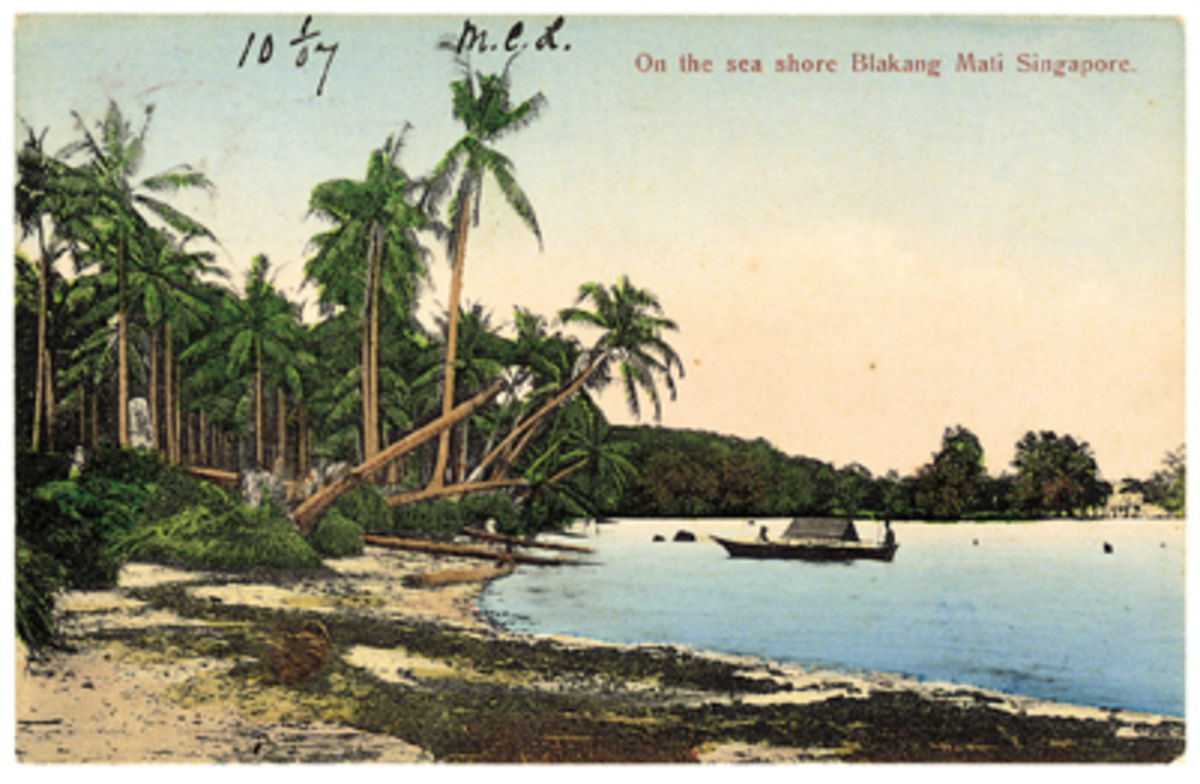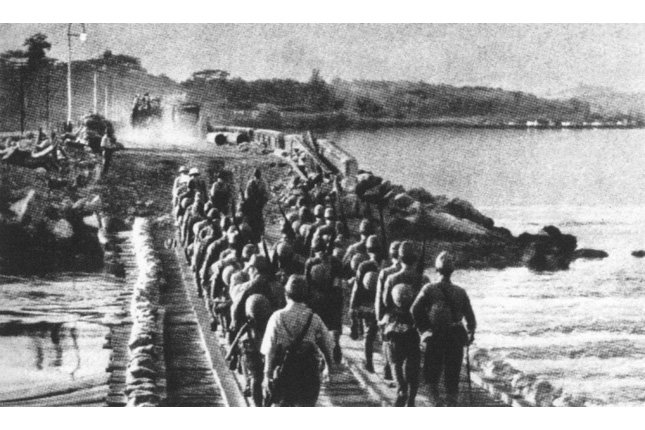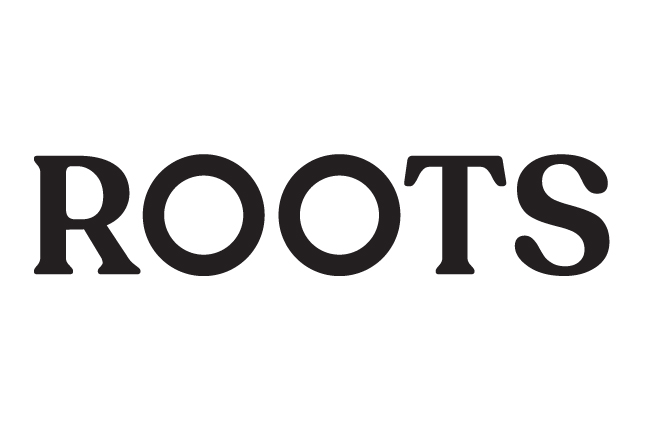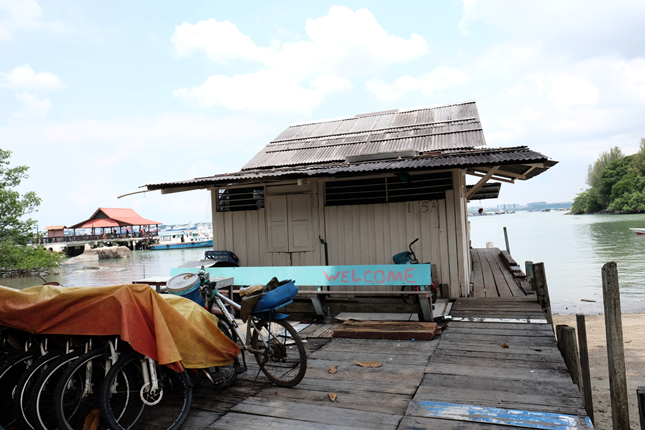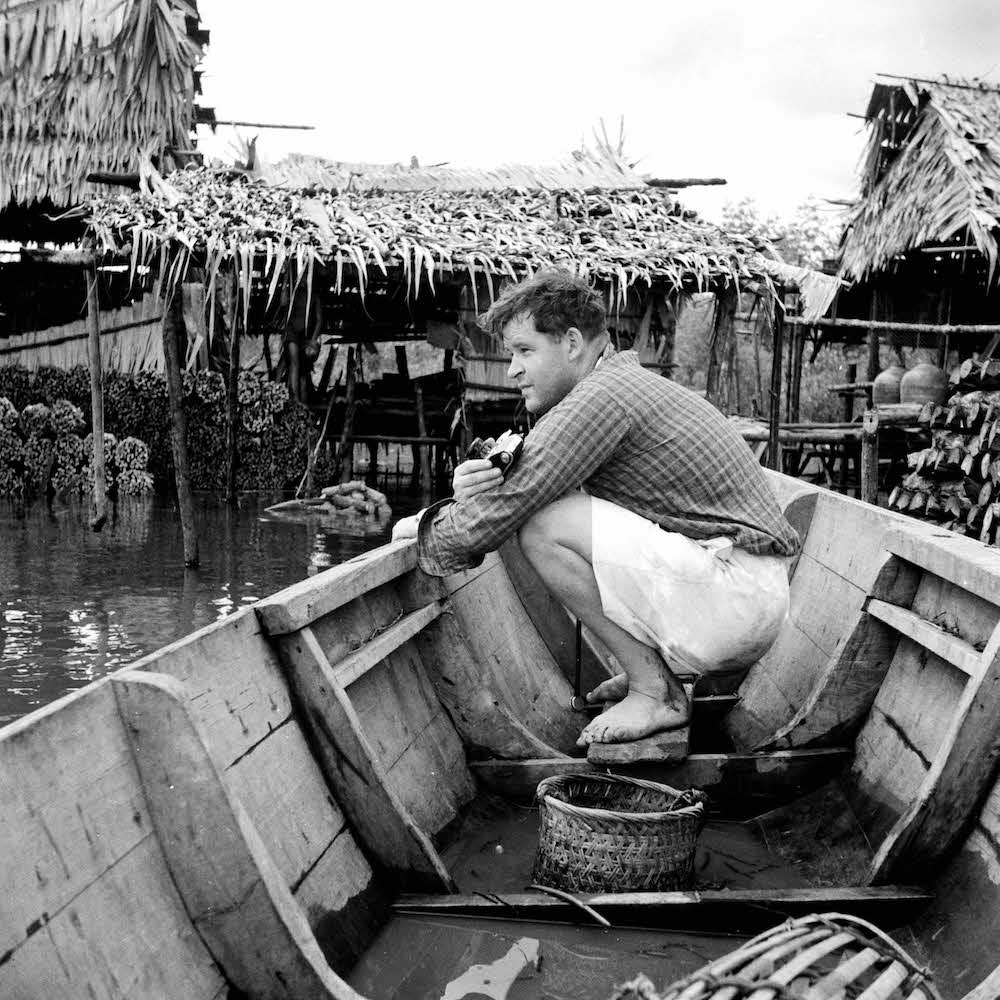Pulau Blakang Mati, as Sentosa used to be known as, is the one of the oldest place names in Singapore. Translated literally as “Death from the Back Island” in Malay, the name appeared in a 17th century map by the Portuguese-Melakan cartographer Manuel Godinho de Erédia. The etymology of Blakang Mati may be drawn from oral traditions of the area, including stories told by locals of piracy and battles on the nearby islands of Pulau Brani and Pulau Tekukor.
The earliest recorded inhabitants of Blakang Mati are the Orang Laut, a boat-dwelling community comprising different suku (tribal groupings). The Orang Selat are one suku that is thought to have lived in the waters around the islands of this area and were noted for being expert navigators of the straits in 17th century European accounts.
A diverse range of groups also settled on Blakang Mati. Across different time periods, settlers included the Orang Laut, Malays, Chinese, Indians, and communities from the Indonesian archipelago, including Wadju Bugis and Javanese. From the early 20th century, most of the Chinese on the island were of the Yeo clan, who migrated from Meishan Village in Fujian, China, and operated most of the passenger boats plying the islands. The early kampongs comprised villages at Telok Bendera, Mount Serapong, and at the south-eastern tip, while civilian residences in the 20th century were mainly clustered on the northern coast.
After Blakang Mati became a military outpost in the 1870s, the British Armed Forces barracked on the island included British, Indian, and Australian soldiers, as well as Nepali Gurkhas and recruits from the Malay Peninsula. Living alongside them were civilian staff, including a community of dhobi (“washerman” in Hindi) from the Indian subcontinent.
Explore the Suggested Short Trail Routes:
-
Kampong and Barracks, 2 hours with public transport, 3km
-
Forts, 2 hours on foot, 4km
-
Memories of Sentosa, 1 hour on foot, 2.5km





